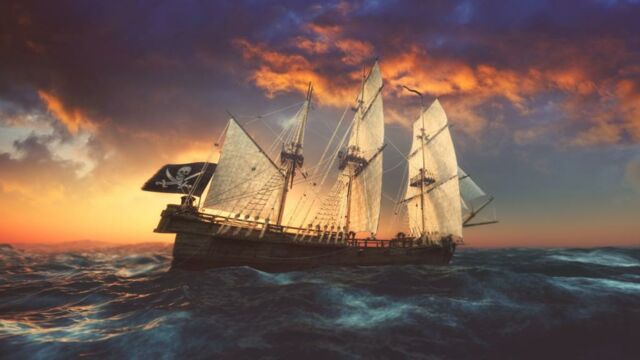Blackbeard's legendary ship, Queen Anne's Revenge, has revealed many treasures. It was during a restoration work carried out on the surviving objects of the wreck, that 16 fragments of paper were analysed, and the book from which they came was identified. An admirable job when you realise that these few scraps of paper have spent nearly 300 years underwater!
Discover our latest podcast
The Queen Anne's Revenge (QAR) Lab team succeeded in extracting these pieces of paper from a knot of damp fabric that may have served as a seal for a barrel tampion (a kind of stopper closing the end of the barrel). It seems that this make-shift plug was the reason the fragments were somewhat protected against the weathering of the elements.
A Voyage to the South Sea, and Round the World
Of the 16 fragments, only seven had readable text. Of the seven, one fragment in particular, and more specifically one word, put the team on the trail of the book they were looking for: 'Hilo.' After having ruled out the town of Hilo in Hawaii, which was only described in 1778 by the famous James Cook, Johanna Green, a historian specialising in texts printed at the University of Glasgow, proposed Ilo, a Spanish colony located on the Peruvian coast.
The team reviewed many books, all mentioning Hilo without ever fully matching the text of the fragments. After extensive research, the original text was found among pages 177, 178 and 183 to 188 of the first edition of A Voyage to the South Sea, and Round the World, Perform'd in the Years 1708, 1709, 1710 and 1711 by Edward Cooke.
In this book, Cooke describes his experience during the expedition led by Woodes Rogers. He tells the story of a certain Alexander Selkirk's rescue, abandoned for 4 years on an island in the Juan Fernández archipelago. Incidentally, the man's fate would later be the inspiration for the character of Robinson Crusoe, whose adventures would be published in 1719 and written by Daniel Defoe.
Blackbeard and the Queen Anne's Revenge
Edward Teach, better known under the name of Blackbeard, became in just a few years one of the most famous pirates in history. The dreaded Englishman always made an impression with his fierce appearance, his thick dark beard and the lit cannon fuses he used to twist in his hair during combat.
On November 28, 1717, Blackbeard and his men took La Concorde, a 300-ton slave frigate carrying slaves on board. After disembarking the crew and cargo on Bequia Island, Teach renamed it Queen Anne's Revenge, a ship destined to become as legendary as its captain.
Its wreck, which ran aground in 1718, was found in 1996 by divers from the private company Intersal Inc., based in Florida. Although there was never much doubt about its identity, she was not definitively identified until 2011, when enough evidence was collected and analysed to certify that it was indeed the Blackbeard's ship, the most famous of the seven seas, in the time of wooden ship and iron men.
As to who was the owner of the book, that question will probably remain unanswered. It was not uncommon for pirates to seize books during their looting. 'Given the literacy rates of English sailors at the time, it could have belonged to any member of the crew,' admits Erik Farrell, curator at QAR Lab.















